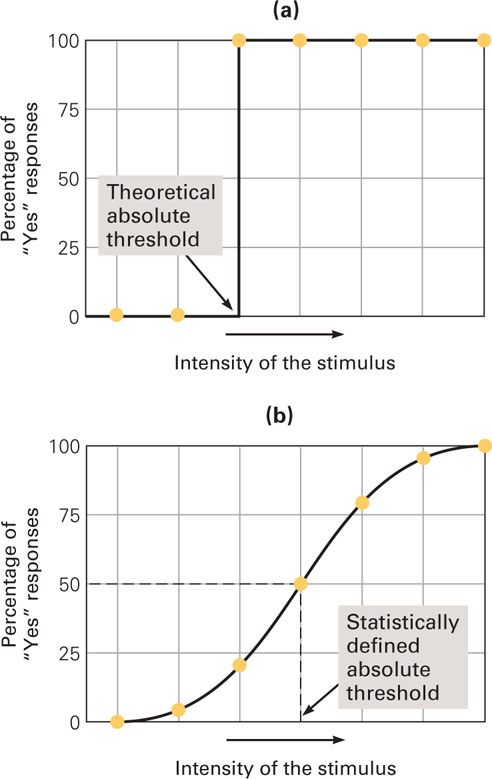
Figure 3.2 Theoretical and Observed Absolute Thresholds (a) This is a depiction of the result that psychophysical researchers thought they would observe in their detection studies. Theoretically, the absolute threshold is the minimum amount of physical energy in a stimulus (the minimum intensity of a stimulus) necessary to detect it. If a stimulus does not have this much energy, it should never be detected. If it has this much energy or more, it should always be detected. (b) This is a depiction of the result that psychophysical researchers actually obtained. There was no amount of physical energy in a stimulus that led to the kind of responding depicted in (a). Instead, the responding looked more like a flattened S shape. Thus, the absolute threshold was defined statistically as the minimum amount of energy in a stimulus detected 50 percent of the time.